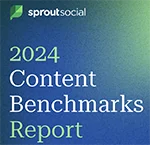 You’re denying my child a life-saving medicine!” “Ingredients in your foods are toxic.” Imagine these words landing one after another on your brand’s Facebook page or Twitter feed. In minutes, the online “voice” of your brand that you’ve worked hard to establish is smothered in negative commentary. You may find yourself asking: is my brand ready for this?
You’re denying my child a life-saving medicine!” “Ingredients in your foods are toxic.” Imagine these words landing one after another on your brand’s Facebook page or Twitter feed. In minutes, the online “voice” of your brand that you’ve worked hard to establish is smothered in negative commentary. You may find yourself asking: is my brand ready for this?
Even as social media opens valuable communications channels between companies and their customers, it simultaneously exposes brands to critics seeking change. Ready access to computers and smartphones enables anyone to become an activist. While traditional non-governmental groups strategically initiate sophisticated campaigns, an effective activist effort may rise from the grass roots — such as mothers protesting the safety of children’s products or patients desperate to obtain a new drug.
|
|
Whatever their agenda, one activist’s call to action can quickly propagate into a rallying cry, due to the ease for others to comment, to “like” and retweet the message. Social media platforms can become the oxygen under a lowly-lit flame, creating a blaze that spreads the opinions of detractors who challenge a firm’s mission, management or operations. All companies should proactively hone their ability to respond to such events with the appropriate speed, scale and tenor. Yet, as countless hashtags and news headlines attest, companies continue to be caught ill prepared.
Brand-jacking
Public shaming is a common tactic of online activist campaigns. But this is just the tip of the iceberg. Savvy activists are exploring strategies that impact companies’ bottom lines: namely, forums where products are sold. Last fall, PepsiCo was the focus of a coordinated campaign by the Rainforest Action Network. According to the environmental group, Pepsi products relied on palm oil that was harvested unsustainably in rainforests. RAN hijacked on Amazon.com that allows customers to post questions about products. Provocative strings of queries ensued, such as “Is Pepsi still destroying forests for palm oil?” In a second effort, RAN flooded Pepsi’s Amazon page with thousands of demeaning one-star reviews.
A more vivid example comes from the environmental group Greenpeace. The group protested Shell Oil’s drilling plans in the Arctic by putting pressure on the plastic toy company Lego, a downstream Shell customer. Greenpeace “brand-jacked” Lego’s figurines in a video designed for YouTube. In it, an entire Artic village made of Lego blocks is drowned in oil. Not even the town’s Lego puppy was spared. An e-petition at the end of the video called on the toymaker to end its partnership with Shell. The Greenpeace video went viral, garnering more than five million YouTube hits. Within weeks, Lego announced that it would end its partnership with Shell.
#SaveJosh
Consumer products have been fertile ground for activist campaigns because of their early engagement in social media. In the coming years, we believe biopharmaceutical companies will also become targets. Why? With frustrations over the growing price of medicines and increasing interest in gaining access to exploratory therapies, it’s likely patients-turned-activists will turn to avenues such as social media to muster support.
A quintessential example is the case of #SaveJosh, a program initiated by the parents of Josh Hardy, a young boy suffering from cancer, who developed a life-threatening infection after receiving a bone marrow transplant. His family sought access to an anti-viral drug that was not yet approved by the Food & Drug Administration.
The investigational drug’s manufacturer, Chimerix, initially declined their appeal citing, among several reasons, that the drug’s early access program had closed and that they had declined nearly 200 similar compassionate use requests. Josh’s family and friends created a Facebook page and the signature hashtag #SaveJosh demanding access to the medicine. It quickly swelled to thousands of likes, tweets, and an e-petition that spilled into the national news cycle. In days, under withering public pressure, Chimerix announced that it would work with the FDA to open clinical testing. Josh was among the first to receive treatment. The change of heart came in time to help the patient — but not in time to spare the company from painful media scrutiny and the later departure of its CEO.
Six steps to protect your brand
There is no one foolproof formula to prevent all potential detractors from vocalizing grievances online. But, what is clear is that planning your response in real-time will not suffice. At inVentiv Health Public Relations, my colleagues and I have identified six steps to help stimulate a company’s reputational immune system and defuse some of the most harmful impacts of a targeted social media campaign.
Cultivate relationships. Examine your brand through the eyes of those who feel most aggrieved by your business policies and practices. Understanding their concerns and behaviors will offer an insight into their future actions. On a parallel path, shore up your relationships with credible organizations and individuals who share your position, and who will speak up if you come under fire.
Predict and monitor. Many issues can be anticipated when companies tune their listening to the right signals. Executives should couple social listening with cross-functional information sharing to spot emerging issues. Overlaying offline and online intelligence, such as advocacy group comments or hotline calls, may help identify an issue that could metastasize from one channel to another.
Plan and establish protocols. Empower a team of first responders before the warning signals appear, complete with a response protocol that specifies who responds when negative commentary surfaces, and what statements are cleared for immediate use in each channel.
Practice response. Simulation exercises are an effective way to stress-test your plans. They allow teams to rehearse and build ‘muscle memory’ so they know how to act, when a crisis hits. Companies should simulate multi-platform issues because modern crises are rarely contained to traditional media alone.
Assess and engage. All online chatter is not equal. Learn to recognize when a critical campaign is trending upwards, and have tiers of response pegged to quantitative and qualitative metrics that gauge the intensity of the assault. With a history-based understanding of how social media threats have played out in the past, you can calibrate the level of response. An appropriate intervention could range from personal outreach to a disgruntled stakeholder, to the launch of a dedicated splash page, or even could escalate to a modification in business practices.
Measure and refine. Issues, like conversations are fluid. Ensure internal teams are measuring the impact of your response actions in real-time, and be prepared to change approach if they are not working.
The take away? As the web continues to democratize the ability for people to voice their frustrations, social media activism aimed at corporations will only intensify. On behalf of its stakeholders, companies must proactively plan their responses now or be left cleaning up the aftermath.
* * *
Meg Alexander leads inVentiv Health Public Relations Issues Management practice.



 What if companies could harness the fury of online outrage into a force for good? This is precisely where companies can start turning the trolls into brand champions.
What if companies could harness the fury of online outrage into a force for good? This is precisely where companies can start turning the trolls into brand champions. Audiences interacted with brand content far more often on Facebook and Instagram in 2023 than they did via X (formerly Twitter), according to a report that tracked engagement trends across different social networks.
Audiences interacted with brand content far more often on Facebook and Instagram in 2023 than they did via X (formerly Twitter), according to a report that tracked engagement trends across different social networks. Can public relations help counteract the dissension fostered by the power of digital platforms to spread hate, fear and confusion?
Can public relations help counteract the dissension fostered by the power of digital platforms to spread hate, fear and confusion? The number of Americans who get their news from TikTok has quadrupled in the last three years, according to a recent Pew Research Center report.
The number of Americans who get their news from TikTok has quadrupled in the last three years, according to a recent Pew Research Center report.


 Have a comment? Send it to
Have a comment? Send it to 
No comments have been submitted for this story yet.